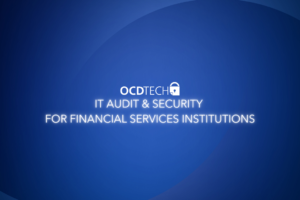5 Ways to Enhance Cloud Security and Protect Against Threats
As businesses increasingly rely on cloud computing, it’s important to be aware of the potential security threats that can arise. From data breaches to unauthorized access, cloud security threats can have serious consequences. Fortunately, there are several techniques you can implement to fortify your cloud security and protect your business from these risks.
1.Implement strong access controls and authentication measures.
One of the most important ways to enhance cloud security is to implement strong access controls and authentication measures. This means ensuring that only authorized individuals have access to your cloud resources. Use strong passwords and consider implementing multi-factor authentication, which requires users to provide additional verification, such as a fingerprint or a code sent to their mobile device, in addition to their password. Regularly review and update access privileges to ensure that only those who need access have it, and revoke access for any former employees or contractors. By implementing these measures, you can significantly reduce the risk of unauthorized access to your cloud environment.
2.Regularly update and patch your cloud infrastructure.
Regularly updating and patching your cloud infrastructure is crucial for maintaining strong security. Software updates and patches often include important security fixes that address vulnerabilities and protect against potential threats. By staying up to date with these updates, you can ensure that your cloud environment is equipped with the latest security measures. Additionally, regularly reviewing and patching your infrastructure helps to address any known vulnerabilities and minimize the risk of exploitation. Make sure to establish a process for monitoring and applying updates, and consider automating this process to ensure timely and efficient patching. By prioritizing regular updates and patches, you can enhance your cloud security and protect against potential threats.
3.Encrypt your data both in transit and at rest.
Encrypting your data is a crucial step in enhancing cloud security and protecting against threats. Encryption ensures that your data is unreadable to unauthorized individuals, even if it is intercepted or accessed without authorization. It provides an extra layer of protection, making it extremely difficult for hackers to access and decipher your sensitive information.
To encrypt your data in transit, use secure communication protocols such as SSL/TLS when transferring data between your devices and the cloud. This ensures that the data is encrypted during transmission, making it difficult for attackers to intercept and decipher.
Encrypting your data at rest means that the data is encrypted when it is stored in the cloud. This protects your data from unauthorized access in case of a data breach or physical theft of storage devices. Most cloud service providers offer built-in encryption options, allowing you to encrypt your data before it is stored in the cloud.
It is important to choose strong encryption algorithms and regularly update your encryption keys to maintain the security of your data. Additionally, consider implementing multi-factor authentication to further protect access to your encrypted data. By encrypting your data both in transit and at rest, you can significantly enhance your cloud security and mitigate the risk of data breaches and unauthorized access.
4.Use a reliable cloud security solution to monitor and detect any suspicious activity.
Implementing a reliable cloud security solution is essential for protecting your business against potential threats. These solutions can monitor your cloud environment and detect any suspicious activity that may indicate a security breach or unauthorized access. They can provide real-time alerts and notifications, allowing you to take immediate action to mitigate the risk.
A good cloud security solution should include features such as intrusion detection and prevention, log monitoring and analysis, vulnerability scanning, and threat intelligence. It should also offer advanced analytics and machine learning capabilities to identify patterns and anomalies that may indicate a security threat.
Regularly reviewing and analyzing the security logs and reports generated by your cloud security solution is crucial for identifying any potential vulnerabilities or weaknesses in your cloud environment. This will enable you to take proactive measures to address these issues and strengthen your cloud security.
In addition to using a reliable cloud security solution, it is important to regularly update and patch your cloud infrastructure and applications to ensure that they are protected against the latest security threats. Regularly training your employees on best practices for cloud security and enforcing strong password policies can also help prevent unauthorized access to your cloud resources.
By using a reliable cloud security solution and implementing best practices for cloud security, you can enhance the security of your cloud environment and protect your business against potential threats.
5.Educate your employees about best practices for cloud security and enforce strict security policies.
One of the most important steps in enhancing cloud security is educating your employees about best practices and enforcing strict security policies. This includes training them on how to identify and report potential security threats, such as phishing emails or suspicious website links. It is crucial to emphasize the importance of strong passwords and the need to regularly update them. Additionally, employees should be educated on the risks of sharing sensitive information or credentials and the importance of using secure file sharing methods. By ensuring that your employees are well-informed and following strict security protocols, you can significantly reduce the risk of unauthorized access and potential security breaches in your cloud environment.
Call OCD Tech today for more information on SOC2 reports and service provider assurance.




